The 6-Kingdoms of life -> motion
Motion
Motion is the act of changing place or position. It is an essential concept in the field of physics and is crucial to understanding the world around us. There are several key aspects to consider when studying motion, including types of motion, measurement of motion, and the forces that affect it.
Types of Motion
There are different types of motion, including:
- Translational Motion: This type of motion involves an object moving from one place to another.
- Rotational Motion: Rotational motion occurs when an object spins or rotates around an axis.
- Oscillatory Motion: Oscillatory motion involves repetitive back and forth movement around a central point.
Measurement of Motion
When studying motion, it is important to be able to measure and quantify it. The following are key concepts related to the measurement of motion:
- Distance: Distance is the total path traveled by an object, and it is measured in units such as meters (m) or kilometers (km).
- Displacement: Displacement is the change in position of an object, measured in a specific direction from the starting point.
- Speed: Speed is the rate at which an object covers distance, and it is calculated as distance divided by time. Its units include meters per second (m/s) or kilometers per hour (km/h).
- Velocity: Velocity is the speed of an object in a specific direction, and it includes both the speed and the direction of motion.
- Acceleration: Acceleration measures the rate of change of velocity over time, and it is calculated as the change in velocity divided by the time taken.
Forces Affecting Motion
Several forces can affect the motion of objects. These include:
- Gravity: The force of gravity pulls objects toward the center of the Earth and affects their motion.
- Friction: Friction is the force that opposes the motion of objects when they are in contact with each other.
- Applied Force: Applied force is a force that is applied to an object by a person or another object, causing it to move or change its motion.
- Air Resistance: Air resistance is a force that opposes the motion of objects as they move through the air.
Study Guide for Motion
When studying motion, it is important to focus on the following key areas:
- Understand the different types of motion and be able to identify examples of each type.
- Master the measurement of motion, including distance, displacement, speed, velocity, and acceleration, and be able to solve problems related to these concepts.
- Recognize the forces that can affect motion and understand how they impact the movement of objects.
- Practice applying the concepts of motion to real-life situations and scenarios to deepen understanding.
◂Science Worksheets and Study Guides Fifth Grade. The 6-Kingdoms of life
Study Guide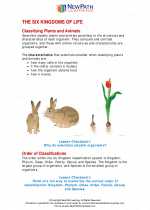 The 6-Kingdoms of life
The 6-Kingdoms of life  Activity Lesson
Activity Lesson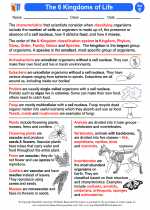 Kingdoms
Kingdoms  Worksheet/Answer key
Worksheet/Answer key The 6-Kingdoms of life
The 6-Kingdoms of life  Worksheet/Answer key
Worksheet/Answer key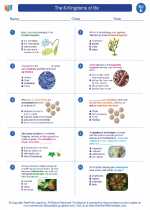 The 6-Kingdoms of life
The 6-Kingdoms of life  Worksheet/Answer key
Worksheet/Answer key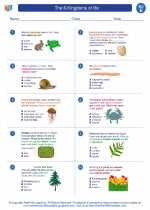 The 6-Kingdoms of life
The 6-Kingdoms of life  Worksheet/Answer key
Worksheet/Answer key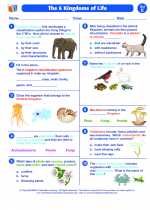 The 6-Kingdoms of life
The 6-Kingdoms of life  Vocabulary/Answer key
Vocabulary/Answer key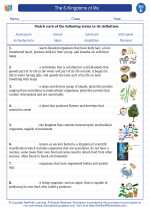 The 6-Kingdoms of life
The 6-Kingdoms of life  Vocabulary/Answer key
Vocabulary/Answer key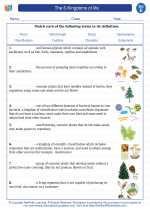 The 6-Kingdoms of life
The 6-Kingdoms of life  Vocabulary/Answer key
Vocabulary/Answer key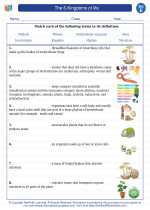 The 6-Kingdoms of life
The 6-Kingdoms of life  Vocabulary/Answer key
Vocabulary/Answer key The 6-Kingdoms of life
The 6-Kingdoms of life 

 Activity Lesson
Activity Lesson
 Worksheet/Answer key
Worksheet/Answer key
 Worksheet/Answer key
Worksheet/Answer key
 Worksheet/Answer key
Worksheet/Answer key
 Worksheet/Answer key
Worksheet/Answer key
 Vocabulary/Answer key
Vocabulary/Answer key
 Vocabulary/Answer key
Vocabulary/Answer key
 Vocabulary/Answer key
Vocabulary/Answer key
 Vocabulary/Answer key
Vocabulary/Answer key

The resources above cover the following skills:
Concepts of Life Science (SC1, SC2, SC3)
The student demonstrates an understanding of the structure, function, behavior, development, life cycles, and diversity of living organisms by identifying and sorting animals into groups using basic external and internal features.